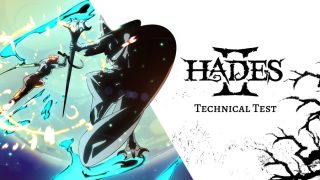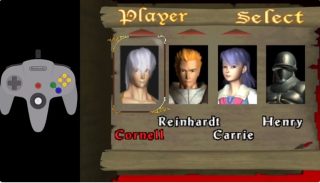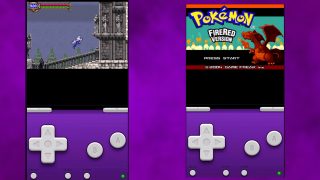Recently, Nintendo revealed two new features for its upcoming multiplayer shooter Splatoon 2: a spectator mode and wired LAN battles. At a glance, these appear to be just a couple more friendly features for the upcoming title, ones that had a slight bent towards more local gameplay with friends. But to anybody aware of the first title’s eSports scene and its struggles, this was a huge step forward, one that will allow for both the easier hosting of local tournaments and a much simpler way of casting them.
Were this an isolated incident, it could perhaps be construed as the Big N throwing the Splatoon community a bone, acknowledging that the first game was erroneously missing such features. But combined with the arena at the end of the Switch reveal, the company’s continued sponsorship of Smash Bros. tournaments, and NoA’s frequent support and attendance of such events suggest a greater shift – that Nintendo is moving to support and focus on the realm of eSports more and more. But why is that significant? Let’s break it down.
Uneasy times
The history of competing with video games goes back to the foundations of the gaming industry itself – how many people competed for high scores in arcade games, back in the day? The idea of “eSports” – that is, an industry based on and built around the competitive playing of video games – has a more nebulous origin point. Fighting game tournaments have been running for well over 20 years, ever since the advent of Street Fighter II, but in terms of cultural and economic impact many would say the first proper eSport was StarCraft: Brood War back in the early 2000s. While less pronounced in the Americas, the game’s scene in South Korea fundamentally changed the gaming culture forever within the country, as entire establishments – both physical and economic – became dedicated to the RTS. Brood War’s impact may have come a decade and a half ago, but the glitz and glamour of eSports today really began with the rise of MOBAs in the past five years or so – League of Legends, Dota 2 and so on. Their ascent came with a lot of the money and packed stadiums that venture capitalists fantasize of when they think “eSports”.

Nintendo’s part during these times was hardly pronounced. Until recently, there was only a single series that was really popular from a competitive perspective: Smash Bros. Mario Kart (and the plumber’s other sports escapades) had too much randomness to be deemed true contests of skill, F-Zero lacked popularity and watchability, and there wasn’t really any other franchise that could be construed as having intense and deep competitive multiplayer. (Offerings like Metroid Prime 2’s multiplayer were fairly lacking.)
Thus, for over a decade after the rough genesis of eSports, Smash (particularly Melee) was Nintendo’s sole offering in the realm – and as anyone knowledgeable of Smash’s competitive history will tell you, it was a tenuous relationship. Much of Smash’s direction and goals were a product of the series’ creator, Masahiro Sakurai, who desired a fighting game that everybody could easily enjoy. Sakurai is often misconstrued as disliking or outright hating the competitive scene of Smash – in reality, he simply prefers it act as a more casual friendly game before a strictly hardcore one, which was an attitude that would hold greater ramifications in later years.

Melee is often called a “happy accident.” The game’s competitive play, techniques and overall feel were the product of several exploits in the physics engine – some known by the dev team during development, some not. Regardless of developer intent and knowledge, the early to mid 2000s were a bountiful time in Melee’s competitive play, as the game had a significant presence at MLG circuits and other player-hosted tournaments, culminating with Melee’s spot at EVO 2007. (There was a Brawl tournament there as well the following year, but most deign not to remember that one – for good reason.) In an era without patches or online streaming, Nintendo remained neutral in regards to all this, allowing the tournaments to proceed without intervention but also not throwing any support their way.
The game’s sequel, Super Smash Bros. Brawl, was the victim of much more controversy. Worried that Melee’s skill gap was too wide for casual players to enjoy themselves, Sakurai made a significantly slower and less technical experience overall. Some viewed this as an outright attack on the competitive scene, others as a well-meaning if perhaps ill-sighted attempt to level the playing field. While many can agree Sakurai perhaps went a little too far in certain areas (one word: tripping) a competitive scene still sprouted up for the title, a scene that would prove to be different than the one for Melee.

A new evolution
The game’s release brought two communities – Melee and Brawl – of which there was significant overlap, but also significant strife. (Smash 64’s competitive scene existed at the time, but it was much smaller.) Brawl started off after release with a stronger initial interest, yet its popularity began to wane over the years as Melee began to resurge, in large part due to the appearance of the legendary players known as the “five gods” – Mang0, Armada, Mew2King, Hungrybox and PPMD. A popular Brawl mod, Project M, created another splinter faction of players. Even so, both scenes languished in relative obscurity…
A donation drive for EVO 2013 changed all of that. The tournament’s final game was to be decided by who could raise the most money, and realizing that separately they could never best Skullgirls or the other competitors, the Smash communities united as one. Pulling their collective weight behind Melee, the people within the Smash community as a whole managed to win the spot, and rejoiced that their game would be seen on the biggest stage in the Fighting Game Community. As mentioned, eSports had grown exponentially around the turn of the decade, meaning EVO had much greater import in 2013 than it did in 2007 and 2008, and the growth of streaming platforms meant that people could now watch it live in their homes.

Yet, Nintendo nearly stopped it. News broke days before the event that EVO would not be allowed to stream the Melee tournament at Ninty’s demand. To this day, nobody is quite sure why the Big N didn’t want Melee streamed – because it was an older game? Because Nintendo would see no profit from it? Because Sakurai didn’t want the competitive side of Smash broadcast for all to see? The reasons remain murky to this day, but what is known is that the company not only tried to stop the stream, but the tournament itself – the low point in Nintendo’s opinion of competitive gaming, surely.
People were rightfully outraged. After raising thousands for charity just to see Smash on the EVO stage, it was all for naught. The voices and dissent of the community rang loud throughout the internet, garnering attention from mainstream gaming sites and more – probably a lot more coverage than Nintendo anticipated. And thus, just as suddenly as the ban on streaming was announced, it was rescinded – leading to much rejoicing from the Smash community, and a very successful showing of Melee at the Las Vegas tournament.

While Nintendo should be lauded for its quick reversal after the dissenting opinion, it should probably be scorned more for enacting the ban in the first place. Still, the stir and outcry certainly drew the company’s interest and attention, likely for the first time. If people were this passionate about the competitive nature of gaming, could that same energy be channeled into profits or marketing?
Roughly a year later, an answer was found.
Spladvent
E3 2014 brought with it the first two significant Nintendo contributions to eSports: the announcement of Splatoon, and the Smash for Wii U Invitational tournament. Both appeared muted at the time, but subtly marked substantial shifts in the company’s attitude towards eSports as a whole.
First, the Invitational. A rather small event in the scope of the entire conference – essentially a long, raw demo of Smash for Wii U (more commonly known as Smash 4), the tournament was significant for inviting Smash notables such as Ken, KoreanDJ, aMSa and more. At the end, Reggie appeared to hand the trophy to ZeRo (and also to vow to kick Hungrybox’s ass, a promise he ended up unable to fulfill), and it ended up a good nod/apology to the scene after the mess at EVO the year before. While relatively uninteresting compared to, say, the new character announcements at the show, the Invitational proved to be a portent of things to come.

Splatoon, on the other hand, was of crucial significance. Arguably the most important Wii U game for several reasons, such as its unmitigated success as a new IP and the fact that Nintendo finally had a big-name shooter under its belt, but it was also the first game from the company that really, truly focused on the competitive aspect of the game. Balance patches came with detailed notes (as opposed to Smash 4’s vague descriptions), maps and weapons were designed not only based on fun but strategy and fairness, and the game was outright marketed from an eSports angle. While its release the following year ended up lacking a few critical features – most notably LAN and spectating, which are ever so coincidentally being added to the sequel – the success of Splatoon and the cultivation of its small yet dedicated scene proved that at its core it had what it took to become a eSports success.
2015 brought with it several other noteworthy events. After the release of Smash 4 in late 2014, Apex 2015 became the first Smash tournament to be officially sponsored by Nintendo. Pokkén Tournament was announced for Wii U, and would end up coming out in 2016 with strong developer support to mild success (though it appears the title has floundered). Smash continued to grow, as DLC released fairly steadily alongside balance patches. Slowly but surely, Nintendo was beginning to build a competitive name for itself, even if it had a long way to go.
Looking to the future
With its two main missing features now added, Splatoon 2 is shaping up to be a much bigger chance for eSports success from Nintendo. Assuming the sequel can keep the charm, complexity and fun of the first while also making sure that all obstacles to ease of watchability and local tournaments are alleviated, it will come out the gate as a strong shooter with great ability to court viewers and players alike.

One of the bigger surprises of the Switch reveal, ARMS, looks as if it holds potential as well. The focus on a small cast with a variety of weapon options, as well as a button-only control scheme, means that it could potentially be a methodical, unorthodox fighting game – a multiplayer Punch-Out!!, if you will. The game was demoed at Genesis 4 (a massive Smash tournament), showing that Nintendo is attempting to attract FGC players already. The game was even a candidate for the EVO 2017 donation drive, though given it hasn’t released it didn’t make it far.

And, of course, there’s Smash. Melee is as strong as ever, and Smash 4 continues to grow, but whispers of Switch ports for both abound. A Smash 4 version on Switch seems feasible and simple to execute (add on a few more characters and stages, some balance tweaks, a slight graphical upgrade – bam), while a Melee port or remaster would be much trickier to navigate, as nothing but a pure translation of the Melee experience will set the community ablaze. But if Nintendo is committed, then they have the capabilities.
The Big N has come a long way from both its days of non-interference and the time it actively tried to quash competitive efforts. Games are now being marketed by their competitive nature, there are active attempts to create a competitive environment, and Treehouse members such as Bill Trinen even participate in tournaments from time to time. If Nintendo does go all in on eSports, it’ll be an interesting experience – I doubt Nintendo will nail it from the get-go, and there will almost certainly be growing pains. But if there is a big circuit full of cash, competition that’s fun and easy to watch, and a genuine effort to curry the favor of fans… well, then you can catch me in the rafters of the stadium, watching the best in the world fight for being the greatest at what they love.
Leave a Comment


